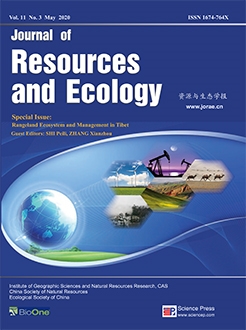Plant photosynthesis is the fundamental driver of all the biospheric functions. Alpine meadow on the Tibetan Plateau is sensitive to rapid climate change, and thus can be considered an indicator for the response of terrestrial ecosystems to climate change. However, seasonal variations in photosynthetic parameters, including the fraction of photosynthetically active radiation by canopy (FPAR), the light extinction coefficient (k) through canopy, and the leaf area index (LAI) of plant communities, are not known for alpine meadows on the Tibetan Plateau. In this study, we used field measurements of radiation components and canopy structure from 2009 to 2011 at a typical alpine meadow on the northern Tibetan Plateau to calculate these three photosynthetic parameters. We developed a satellite-based (NDVI and EVI) method derived from the Beer-Lambert law to estimate the seasonal dynamics of FPAR, k ,and LAI, and we compared these estimates with the Moderate Resolution Imaging Spectroradiometer (MODIS) FPAR (FPAR_MOD) and LAI product (LAI_MOD). The results showed that the average daily FPAR was 0.33, 0.37 and 0.35, respectively, from 2009 to 2011, and that the temporal variations could be explained by all four satellite-based FPAR estimations, including FPAR_MOD, an FPAR estimation derived from the Beer-Lambert law with a constant k (FPAR_LAI), and two FPAR estimations from the nonlinear functions between the ground measurements of FPAR (FAPRg) and NDVI/EVI (FPAR_NDVI and FPAR_EVI). We found that FPAR_MOD seriously undervalued FPARg by over 40%. Tower-based FPAR_LAI also significantly underestimated FPARg by approximately 20% due to the constant k (0.5) throughout the whole growing seasons. This indicated that using FPAR_LAI to validate the FPAR_MOD was not an appropriate method in this alpine meadow because the seasonal variation of k ranged from 0.19 to 2.95 in this alpine meadow. Thus, if the seasonal variation of k was taken into consideration, both FPAR_NDVI and FPAR_EVI provided better descriptions, with negligible overestimates of less than 5% of FAPRg (RMSE=0.05), in FPARg estimations than FPAR_MOD and FPAR_LAI. Combining the satellite-based (NDVI and EVI) estimations of seasonal FPAR and k, LAI_NDVI and LAI_EVI derived from the Beer-Lambert law also provided better LAIg estimations than LAI_MOD (less than 30% of LAIg). Therefore, this study concluded that satellite-based models derived from the Beer-Lambert law were a simple and efficient method for estimating the seasonal dynamics of FPAR, k and LAI in this alpine meadow.
How to translate text using browser tools
5 June 2020
Satellite-based Estimates of Canopy Photosynthetic Parameters for an Alpine Meadow in Northern Tibet
Niu Ben,
He Yongtao,
Zhang Xianzhou,
Shi Peili,
Du Mingyuan
ACCESS THE FULL ARTICLE

Journal of Resources and Ecology
Vol. 11 • No. 3
May 2020
Vol. 11 • No. 3
May 2020
alpine meadow
Beer-Lambert law
leaf area index
light extinction coefficient
radiation components
Tibetan plateau





